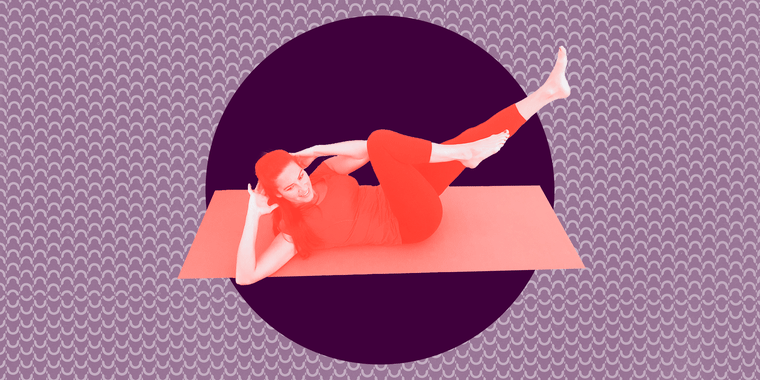Bored with regular crunches? The bicycle crunch is the perfect move to spice up your core workout. It gives you all the same benefits of the standard crunch, plus it works your internal and external obliques. This type of crunch requires more movement and engages more muscles in the core, which has major toning benefits.
Are bicycle crunches effective?
Bicycle crunches can help tone your midsection and slim your waist. Because bicycle crunches require more leg movement than standard crunches, they’re also great for improving stability, flexibility and coordination.
They are also a great move to strengthen your entire core. From picking up heavy grocery bags to climbing the stairs, a strong core is required for a lot of everyday activities and can even help prevent common injuries or strains. Twisting and reaching is also required for everyday activities like getting things off of shelves, putting things away in cabinets and playing with kids.
Do bicycle crunches burn belly fat?
Bicycle crunches can help tone the belly area, but keep in mind that there's really no such thing as spot-reduction with fat loss.
While you're working the abdominal muscles in a bicycle crunch, you'll strengthen your core muscles, which can have a toning and tightening effect. Strength training and building muscle also helps to speed up the metabolism, which helps to burn fat everywhere, including the belly. Adding bicycle crunches to a well-rounded workout routine, along with a healthy eating plan, is a great way to tone your stomach and help get rid of excess belly fat.
Is it better to do bicycle crunches fast or slow?
The answer is both, depending on your goals.
- If you do bicycle crunches quickly, you'll burn more calories by speeding up your heart rate and essentially turning this strength training exercise into a cardio exercise, too.
- If you do bicycle crunches slowly, you'll focus more on precisely engaging each muscle at work.
As a personal trainer and Pilates instructor, I recommend doing bicycle crunches slowly for a number of reasons. First, you'll perfect the form without recruiting muscles that aren't needed. Second, you'll also engage your deepest abdominal muscle, your transverse abdominis, which can be forgotten when you speed through ab workouts. Lastly, focusing on core engagement and connecting your breathe to your movement has a meditative effect and takes greater focus than going as fast as you can.
How many bicycle crunches should you do?
I recommend 20 reps total, which is 10 bicycle crunches to the left and 10 to the right. However, if you are doing more cardio-based bicycle crunches and looking to do as many as possible, you could do up to 40 at a time.
The common mistakes people make when doing bicycle crunches
If done incorrectly, bicycle crunches can be hard on the back and hips. Many of my clients tend to rush through their reps without properly engaging their abs. Bicycle crunches aren’t actually about speed. Instead, they require full core engagement and deliberate movement, which means that going slow actually helps.
It’s also common to allow your hip flexors to take control and end up relying on momentum instead of core engagement, which is definitely not what we want when we’re trying to target our abdominals. Additionally, it’s important to listen to your body. If you feel like you’re straining your neck or back, try readjusting your positioning. Here are some solutions to the common mistakes I see:
- If you find yourself picking up the pace and relying on momentum to carry you through the exercise, take a quick break and reset. Remember to actively engage your core muscles with each crunch.
- Listen to your body while performing bicycle crunches. This means repositioning your body if your neck or back begin to hurt, or lowering your head down closer to the ground instead of curling up so high.
- Make sure you’re not allowing any other muscle groups to take over. Squeeze your core with every crunch and refrain from allowing your hip flexors to take over. This is a core and ab exercise; not a leg exercise.
How to do a modified bicycle crunch
Gaining the core strength and coordination necessary to perform a proper bicycle crunch takes some time. That’s why there are plenty of modifications available for those who aren’t comfortable hopping right into the move.
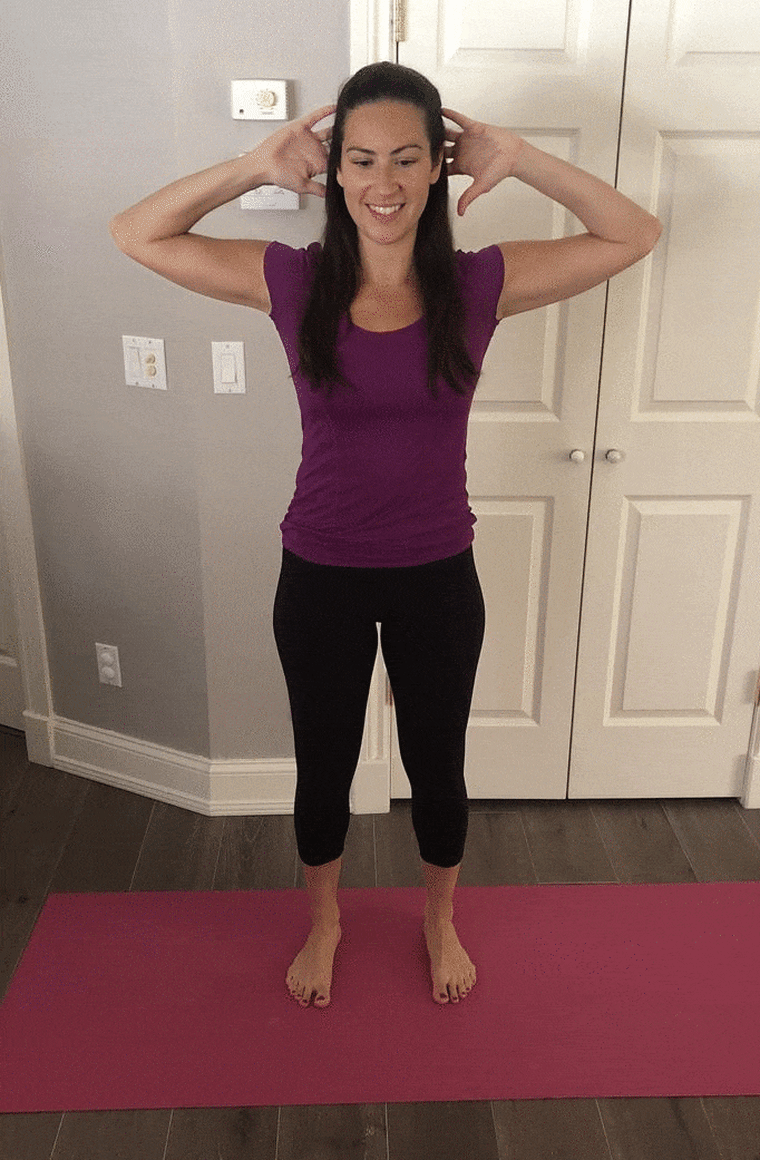
For a modified bicycle crunch, perform the move standing up. Standing up eliminates any neck or back pain you may experience while performing the move on the floor, allowing you to focus on form. With your feet shoulder-width apart and your elbows bent with your hands behind your head, begin raising your right knee while you twist your left elbow across the body toward the knee. Alternate between legs.
How to do a bicycle crunch

If you’re feeling confident in the modified version, move on to the full move. Follow these step-by-step instructions to ensure proper form and maximum core engagement.
- Lie on your back with your knees bent and your feet flat on the ground as wide as your hips.
- With your hands behind your head and your elbows bent out to the sides, use your abs to lift your left shoulder blade off the ground.
- At the same time, bring your right knee to meet your left elbow.
- When your right knee is bent, straighten your left leg and reach it out in front of you at a 45-degree angle.
- Perform on the opposite side, bringing your left knee to your right elbow, straightening the right leg.
- Continue alternating legs and squeeze your core. Brush your inner thighs together as you switch sides to ensure you’re hugging your legs in toward the midline of your body.
4 exercises that will help you perform the bicycle crunch
If you need a little extra practice to perform the bicycle crunch correctly, these four moves can help develop your core strength.
Bird-dog
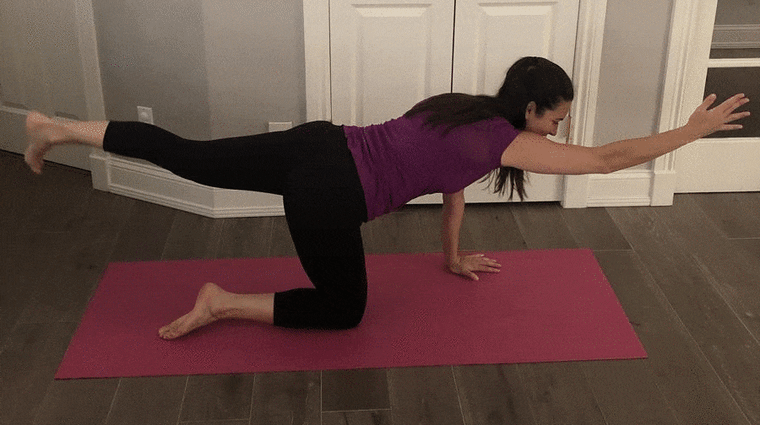
This move works the same muscles as the bicycle crunch, but does so in a different position that reduces the risk of straining your neck and recruiting your hips. Get on all fours with your palms directly below your shoulders and your knees below your hips. Straighten your left arm straight out in front of you and your right leg out behind you. After that, bend your left elbow and your right knee, crunching your abs, until they touch underneath your stomach. Repeat using your right arm and left leg. Alternate between sides, performing 10 times on each side.
Seated bicycle crunch
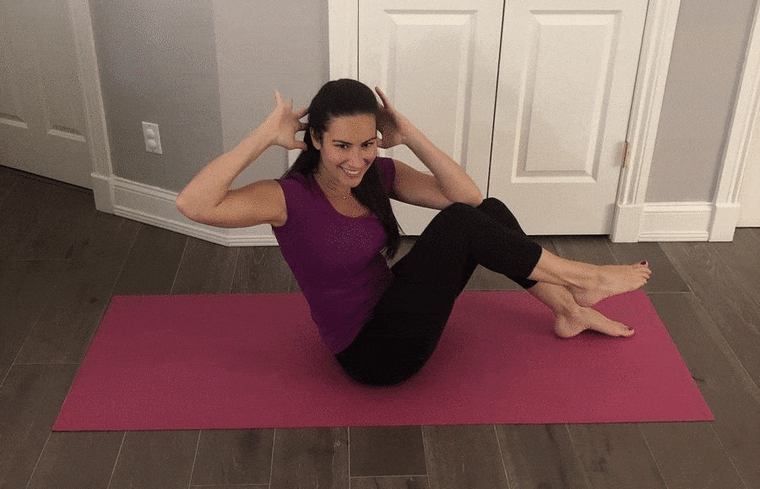
This is a great move for strengthening the core without worrying about any complicated movements. Simply sit on the ground with your legs bent and feet on the ground. Place the hands behind your head, and cross your right elbow toward your left knee. Switch sides, and squeeze your core with each movement. Repeat 10 times on each side.
Wall sit
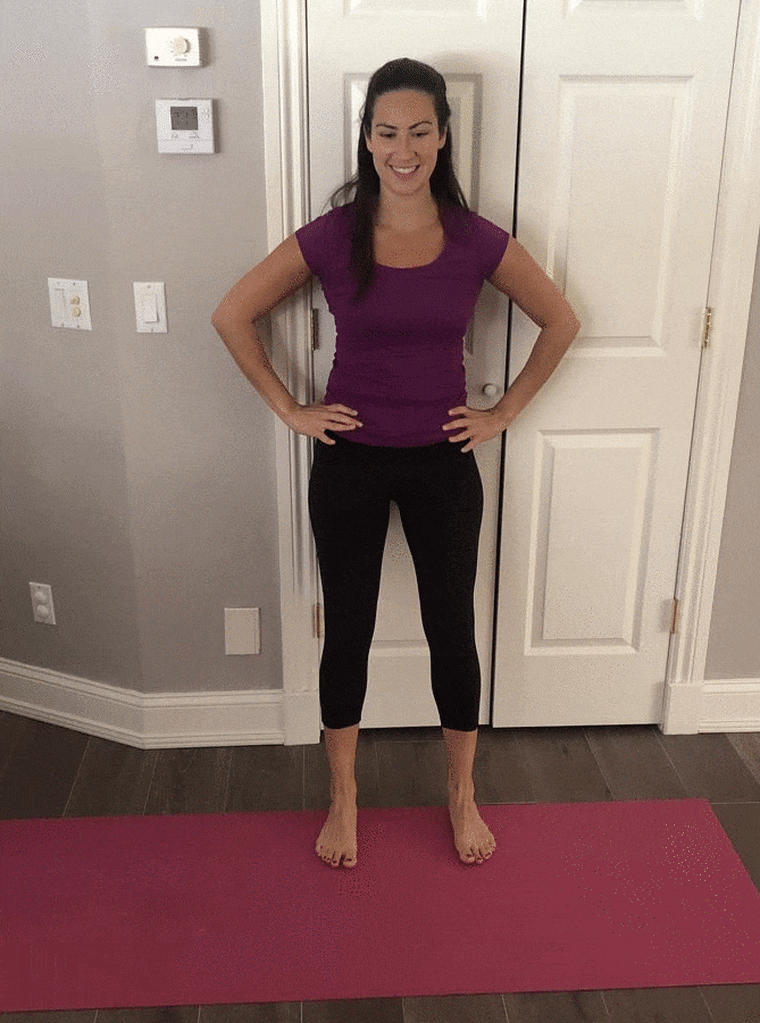
Wall sits train your abs to engage while the legs are doing something — in this case, holding you upright! Simply find a wall and lean your back against it. Squat so that you’re creating a 90-degree angle. Hold this position for 10 seconds, then stand back up. Repeat 10 times.
Modified situp
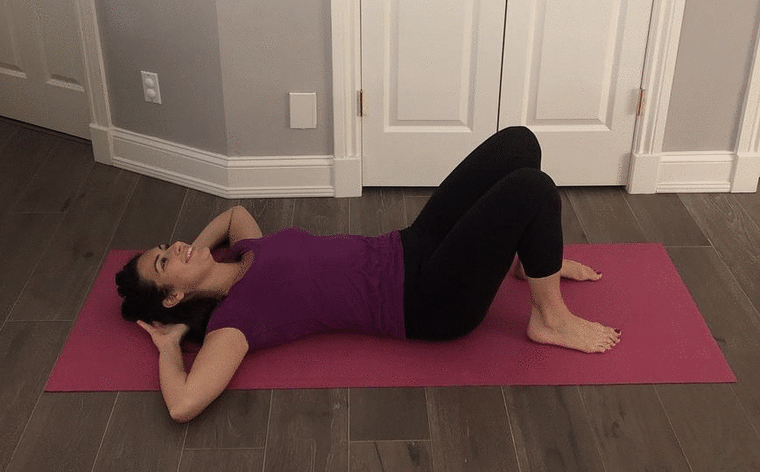
Situps are a go-to core exercise and help strengthen your entire midsection. Lie on your back with your knees bent and your feet flat on the ground. Put your hands behind your head with your elbows pointed out toward your sides. Squeeze your core to lift your upper body off the ground. Repeat 10 times and gradually increase the amount of reps as you gain confidence in your core strength.
